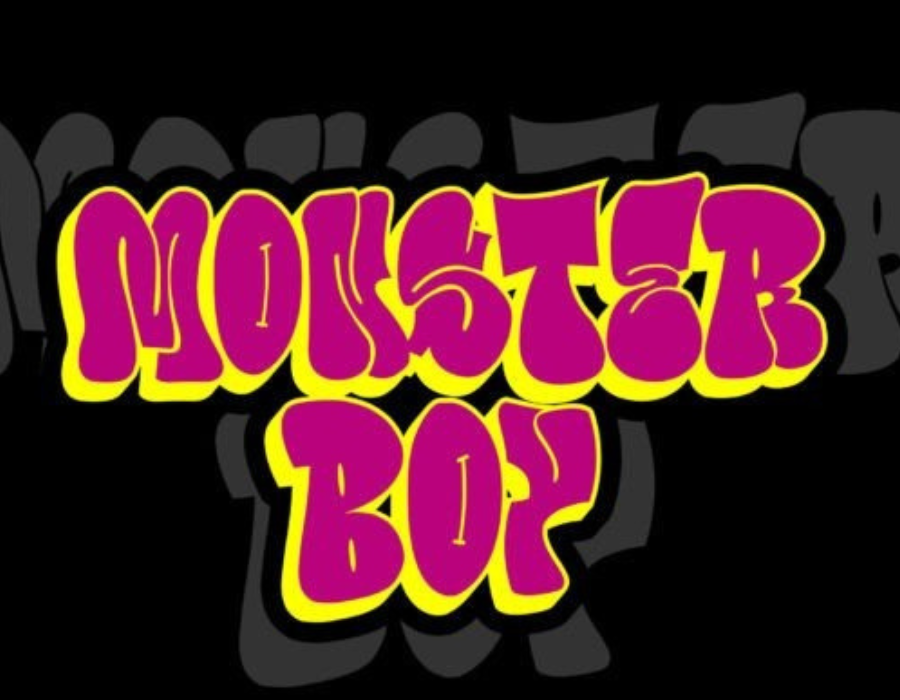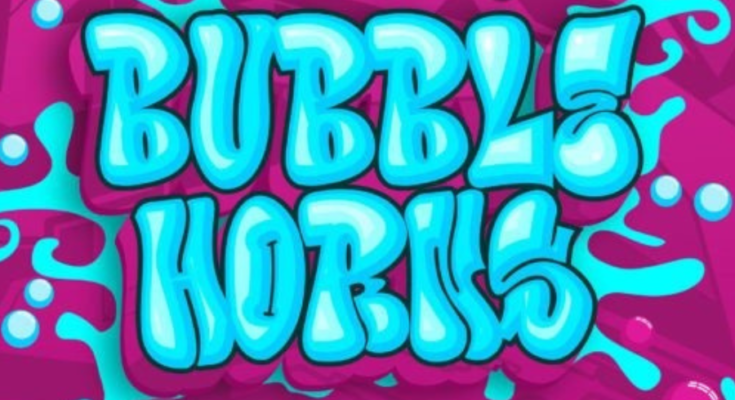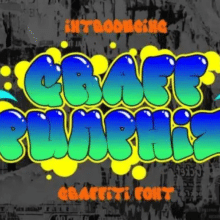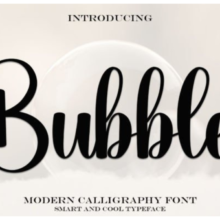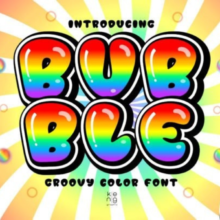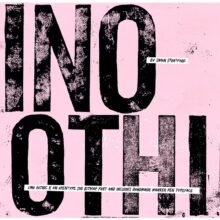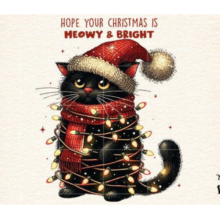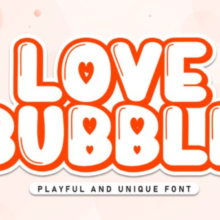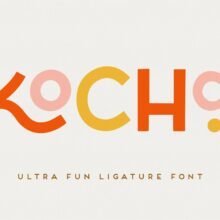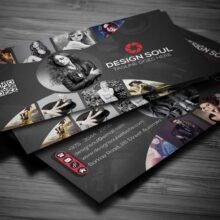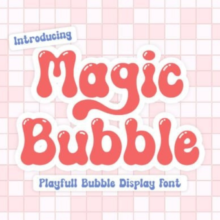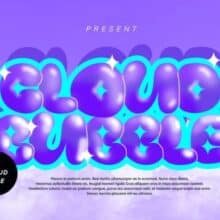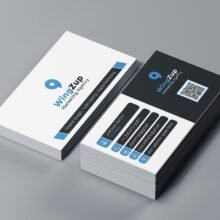Bubble Horns Graffiti Font: A Bold Symphony of Urban Expression and Typographic Innovation
Typography is far more than the simple arrangement of letters; it is the visual voice of identity, personality, and culture. In the rapidly evolving universe of street-inspired digital design, the Bubble Horns Graffiti Font stands as a vivid manifestation of urban creativity, expressive defiance, and stylistic boldness. This font is not only a tool for communication—it is a graphical revolution that invites designers to break the conventional rules and embrace the unpredictable spirit of graffiti art.
Graffiti and Typography: A Cultural Intersection
The roots of the Bubble Horns Graffiti Font are deeply embedded in the world of street art—a culture that thrives on authenticity, freedom, and visual confrontation. Graffiti, as a form of public expression, has long served as a rebellious language of the streets. From city walls to freight trains, graffiti speaks in vibrant colors and stylized characters that pulse with energy and emotion.
In this context, the Bubble Horns Graffiti Font channels the audacious spirit of graffiti and transforms it into a versatile typographic form. It captures the kinetic energy of hand-drawn letters, the inflated aesthetic of bubble tags, and the sharp aggression of horn-like flourishes. The result is a font that vibrates with movement, vocal intensity, and unmistakable personality.
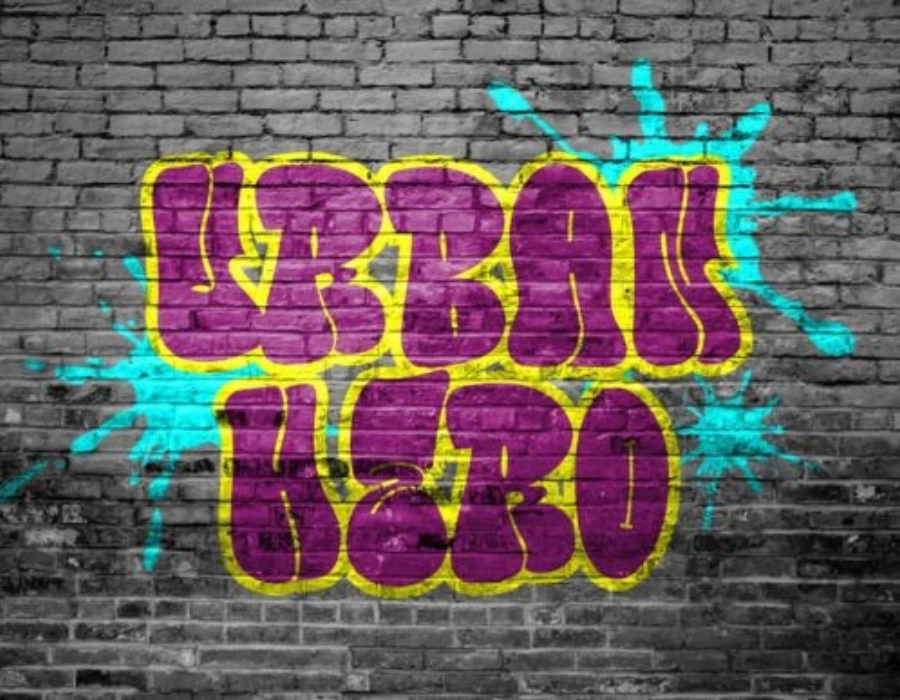
Aesthetic Composition and Design Structure
At first glance, the Bubble Horns Graffiti Font presents a dramatic contrast between soft, voluminous curves and unexpected, horned extensions that cut through the air like sharp declarations. This contrast creates a visual rhythm that feels alive, as if the letters are actively in motion—twisting, bursting, and stretching across the canvas.
Each character in the font is designed with a heightened sense of dimensionality. The inflated curvature mirrors the softness of balloon typography, while the pointed horns inject an element of wildness and unrefined rawness. This duality allows the font to feel simultaneously playful and dangerous, appealing to designers who crave a visually rebellious aesthetic.
The irregular outlines and creative distortions are not imperfections—they are intentional decisions that celebrate the impermanence and spontaneity of street art. Where most fonts seek perfection, Bubble Horns Graffiti Font embraces chaotic creativity, allowing the designer to communicate with a spirit of authenticity and edge.
Expressive Functionality and Design Versatility
While the font exudes an undeniably loud personality, its applications extend far beyond the confines of graffiti-inspired projects. The Bubble Horns Graffiti Font is surprisingly adaptable across various creative domains:
-
Urban Fashion and Streetwear: Perfect for logos, t-shirt prints, and clothing labels that require a youthful, raw identity.
-
Music Industry Design: Ideal for album covers, event flyers, and promotional visuals in genres like hip-hop, punk, rap, trap, and EDM.
-
Creative Advertising: Eye-catching headlines and slogans for campaigns targeting Gen Z and millennial demographics.
-
Social Media Content: Ideal for stylized posts, digital stickers, and promotional art with visual punch.
-
Video Game Interfaces: Titles, menus, and HUD elements for games with rebellious, dystopian, or underground themes.
Despite its wild style, the font maintains surprising legibility, making it functional in both display and decorative use. This characteristic alone sets it apart from many graffiti-style fonts that often sacrifice clarity for style.
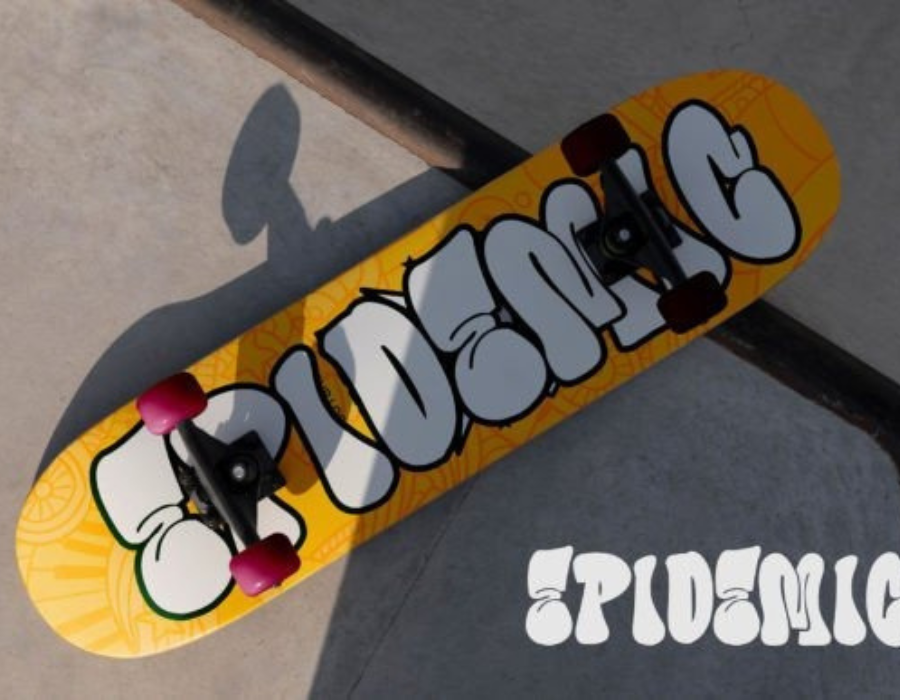
Technical Features and Digital Optimization
The Bubble Horns Graffiti Font isn’t just about looks—it’s also a technically refined typographic tool. Designed with precision, it includes a comprehensive range of features that enhance its performance in both print and digital environments:
-
OpenType Support: Equipped with alternates, ligatures, and contextual glyph substitutions to allow customized letter flow and natural variation.
-
Multilingual Character Set: Supports extended Latin characters, making it accessible to a broad global audience.
-
High-Resolution Quality: Optimized for both high-definition displays and professional printing applications.
-
Cross-Platform Compatibility: Works flawlessly in Adobe Illustrator, Photoshop, InDesign, Figma, Procreate, and other popular design tools.
These technical inclusions make the Bubble Horns Graffiti Font a reliable typographic asset, not just a stylistic experiment.
Emotional and Psychological Impact
Typography is an emotional medium, and the Bubble Horns Graffiti Font is a prime example of a typeface that evokes powerful feelings. The bulbous, air-filled structure of the letters inspires feelings of nostalgia, joy, and childlike wonder, reminiscent of birthday balloons or comic book aesthetics. At the same time, the sharp, aggressive horns protruding from the characters ignite emotions of rebellion, intensity, and nonconformity.
This interplay of emotional cues gives the font a multi-dimensional personality—one that refuses to be boxed into a single category. It is both retro and futuristic, chaotic and calculated, innocent and intimidating. It tells stories not just with words, but with form, silhouette, and structure.
Inspiration and Designer Intent
The designer of the Bubble Horns Graffiti Font sought to create a visual language that spoke to the energy of underground art scenes and the resistance against creative homogenization. Drawing inspiration from decades of graffiti evolution—from early 80s Bronx wall tagging to modern 3D mural installations—the font is both a tribute and a reinvention.
Use Case Examples in Real-World Projects
Here are a few imagined scenarios where the Bubble Horns Graffiti Font takes center stage:
-
A skateboard brand uses it on deck graphics, clothing tags, and pop-up shop signage to appeal to a rebellious youth market.
-
A music festival poster combines psychedelic gradients with the font’s warped shapes to evoke the intensity of the underground sound.
-
A graffiti artist’s portfolio website features it in headers and navigational elements, reinforcing the theme of personal expression.
